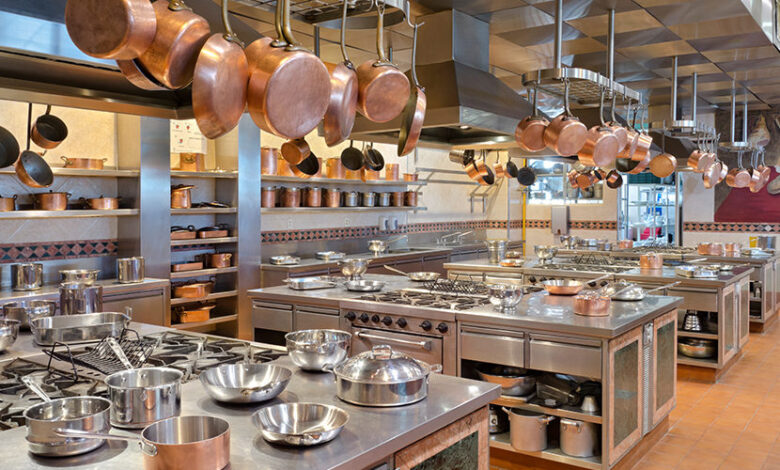Public Health Regulations for Commercial Kitchens

The kitchen is quickly becoming the central hub of the home. It’s where you’ll often find family members gathered around to talk, guests gathering, and more. Today’s kitchens can accommodate a multitude of functions, from bar seating to flat-working surfaces and quartz countertops. This article will give you some tips for designing the perfect kitchen for your business. And while you’re at it, you’ll learn how to understand public health regulations for commercial kitchens.
Keeping food safe in a commercial kitchen
While not all employees in a commercial kitchen will directly handle food, the employees who do must follow safe food handling practices. These include keeping raw meat away from produce, avoiding cross-contamination, and using food safety-grade gloves. Cooks should use food thermometers to make sure that cooked food reaches the correct temperature. Food should be cooked to a temperature above 140 degrees Fahrenheit to prevent bacteria from growing.
Good cleaning practices are critical for keeping your food and business safe. By following proper cleaning procedures, you can reduce the number of harmful bacteria in your food and prevent bad food reviews. It is also possible to download self-health inspection forms from the local health department and ask them to check your establishment. Regardless of the type of food preparation you do, it’s important to know the health codes in your community. Knowing these codes will help you avoid fines and foodborne illness outbreaks. Also, check kitchen hazards picture.
Designing a commercial kitchen for your service type
Before planning a new kitchen for your service type, it’s important to consider the regulations that apply in your state and locality. Starting with your state department of health, you should familiarize yourself with all the rules and regulations for commercial kitchen construction. Each piece of equipment has a specific location and installation guidelines. Make sure you read the manuals to stay up to code. By following the guidelines, you’ll be able to make the most of your budget and maximize space.
The layout of a commercial kitchen can be shaped by the type of food that you serve and its delivery method. If you run a takeaway service, consider the logistics involved, such as storing dishes and packaging. If you’re operating a delivery service, consider incorporating a dedicated pass for multiple dishes. Once you know how many dishes your business will be serving, you can decide on the best layout for your kitchen.
Choosing the right layout for your space
If you plan on entertaining, choosing the right layout for your kitchen is crucial. If you want to create a space for guests to sit, you’ll want to make sure you have enough storage. Consider installing a pantry and deciding on the size of your cabinets. Additionally, you’ll need to consider the size of your big kitchen island and whether or not you want a storage cabinet underneath. Choosing the right layout for your kitchen depends on the size of your room and your lifestyle. Find out more greek style kitchen tiles.
Depending on your needs and space, a U-shaped kitchen may be the best option. This design is popular with homeowners who love to cook and entertain. It features ample counter space along with all three walls and an optimal work triangle, making it ideal for multiple cooks. You can opt for a corner range hood and install open shelves instead of upper cabinets. In a small kitchen, an island can serve as a prime gathering spot.
Understanding public health regulations for commercial kitchens
In some states, having a certificate of compliance with public health regulations is not required to operate a commercial kitchen. However, having such a certificate will be a good idea. This way, you can prove to local health officials that you comply with regulations. To start, understand the regulations of the state where you live. There are several levels of compliance depending on your state. By becoming knowledgeable about local regulations, you can better ensure that your restaurant is in compliance with the law.
In addition to these levels, there are additional requirements that need to be followed in order to prevent foodborne illness. These include temperature abuse and ergonomic hazards. Additionally, there are regulations about employee dress codes and eating in the kitchen. You should also know that inspectors check the cleanliness of surfaces and equipment used for food preparation and storage. They also evaluate the condition of restrooms, and garbage areas, and whether there are signs of rodent infestation.




